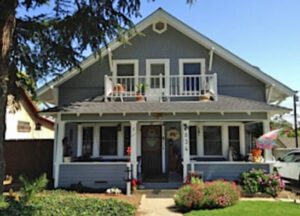
Photo: 834 E. Magnolia Blvd. Burbank CA 91501. A designated historic home built in 1910. Courtesy Jim Casey December 7, 2023.
Burbank now has an easy Historic Landmarking Application process in place for both residential and commercial structures 50 years or older. As an incentive for you to continue to maintain the look and feel of your property, the Mills Act Tax Abatement provides up to 75% off your property taxes in perpetuity, and the Mills Act transfers with the property when it is sold, offering a huge value to the seller as well as the buyer. Burbank also has a Historic District Application process available to neighborhoods who want to protect the charm and character, which initially draws us to Burbank.
Burbank still has a long way to go to overcome its misconceptions. Folks tend to become closed-minded based on inaccurate information and cling to unrealistic expectations about the impacts or benefits of preservation. Here are six of the most prevalent myths about historic preservation in Burbank.
Myth #1: “If my property is designated as a local historic landmark, then it can never be demolished”
Fact: Well, the purpose of landmarking is to provide that kind of protection; however, like a lot of other cities, Burbank will allow exception for cases of demonstrated economic hardship. California State landmarks require an Environmental Impact Report to assess potential alternatives to demolition. Even the National Register of Historic Places allows exception in certain cases.
Myth #2: “Historic Designation will lower my property values”
Fact: Nationwide studies have demonstrated historic designation will increase property values. Why? Because historic designation gives a neighborhood a certain cachet, setting it apart from ordinary properties. And buyers who seek out unique qualities offered in a historic property are generally better qualified and understand the added value of what they are buying. Historic district designation offers potential homebuyers two rare and economically valuable assurances: the qualities that attracted them to the neighborhood will endure over time, and they can reinvest in sensitive improvement to their home without fear that a neighbor will undermine their investment with something inappropriate and out of context with the neighborhood.
Myth #3: “I won’t be able to make changes, additions, or add a second floor”
Fact: Owners can actually make significant changes. The preservation laws are designed not to prevent change but to manage change. The purpose is to encourage maintenance and even additions can be made as well, but should be within the context of the historic architecture. In Burbank, all that is required is that the home maintains its original historic architectural elements as seen from the street. Interior changes are at the discretion of the owner. As always, proper permits are required, as with any ordinary home. You will need to add the approval of the Heritage Commission into your construction schedule, which may add up to 4 weeks since the commission meets only monthly.
Myth #4: “Preservation is only for the rich and elite”
Fact: Preservation is diverse and can include homes and neighborhoods containing social and cultural meaning. Burbank’s history included a large population which supported Lockheed and the movie studios. Some of Burbank’s old neighborhoods provided modest housing for those employees and their families.
Myth #5: “Preservation is a violation of my property rights”
Fact: Preservation laws no more infringe on property rights than do the other laws and rules Americans have long accepted. Although people like to believe “my home is my castle and I can do whatever I want,” it is a statement that simply does not reflect reality. Zoning laws prevent you from quite a number of things such as replacing your single-family home with a hotel or apartment building. If you live in a gated community or condo, you have CC&Rs that can prevent you from having a pet or washing your car in your driveway. Yet these far more onerous laws are commonly accepted by the most vocal property rights advocates.
Myth #6: “If I landmark my house, I’ll have to open it to the public, like a museum”
Fact: This is simply not true. It is a private home and stays as such. However, if the home falls into disrepair, there may be a required inspection of the home to ensure its protection. Especially if the historic property is receiving the Mills Act Tax Abatement Program, designed to provide the homeowner with tax abatement in exchange for a guaranteed maintenance program.
If you have any questions about historic designation or would like to know if your home might qualify, feel free to reach out to me on Instagram @jimcaseyrealtor or by email at jim.casey@harcourtsprime.
(Note: Part one on historic Burbank homes here)


